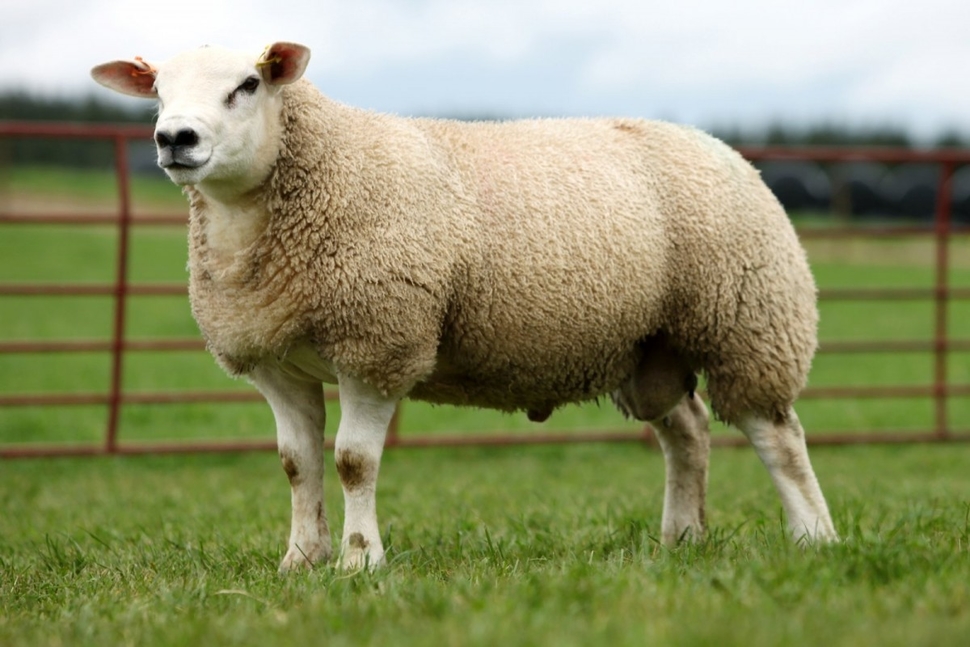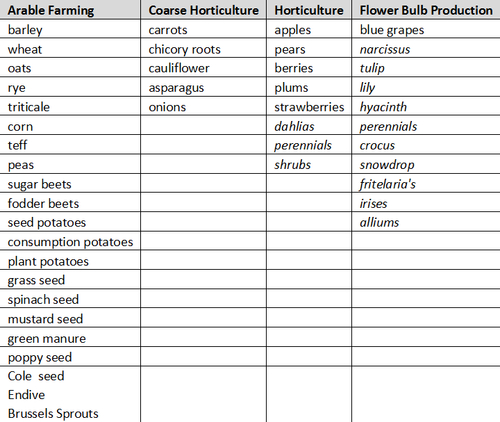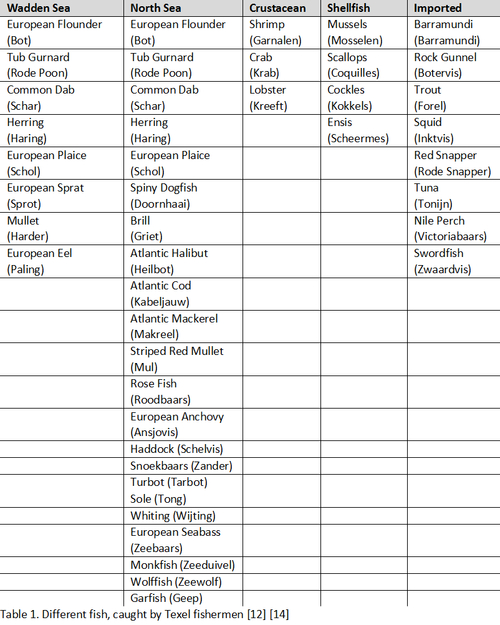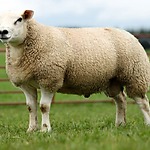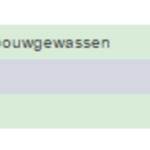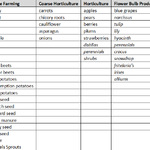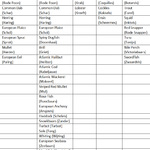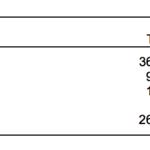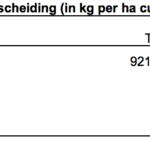Looking at ‘Food’ in general or specifically at the sub-system ‘Feed Texel’ as a socio-technological system it might be safe to say that this is a system that probably influences the most people. Everybody has got to eat, everybody is part of this system. Especially if you’re focussing on creating a closed food cycle on a smaller area such as Texel, which could be seen as an isolated area. The sub-system ‘Feed Texel’ can be divided into two directions; the production of food and the consumption of food. We divided the sub-system into three parts: Agriculture, fishery and cattle breeding.
Agriculture
Introduction
Agriculture is a big part of Texel’s day to day life. According to PR Landbouw [3.]15% of the inhabitants of the island is currently working in this sector, annually generating 60 million euros. 15% might not sound as much, but in comparison to the mainland it is; where only 3% of the population works in this sector. In total 8700 hectare of the island is used for agriculture; which translates into 220 companies with the following division:
- Arable farms: 38
- Horticultural: 44
- Grazing livestock: 95
- Combinations: 43
The land used for agriculture can be found around the villages and in the polders; and can be divided into two sections; ‘Het Oude Land’ and the ‘Nieuwe Polders’. ‘Het Oude Land’ is the area around the village of Oosterend, the Hoge Berg and the inner edge of the island. In this area all types of agriculture can be found, whereas the arable farming is the overly represented type of agriculture in the ‘Nieuwe Polders’.
To research the food production (agriculture) on Texel we have decided to divide this into three categories; arable farming, fisheries and cattle breeding (& slaughter). Each will be discussed individually for both the current situation as the future possibilities.
Arable Farming in general
The ‘Landbouw Folder’ [3.] states that nearly half (3938 hectare) of the land used for agriculture is destined for arable farming. Most of this ground can be found in and around the polders of Eijerland, the North and Prince Hendrik [4.].
Regarding the techniques used for arable farming, in general the techniques used on Texel are the same as on the mainland. There is however one big difference with arable farming on the island; irrigation is prohibited [4.]. Even in dry summers no water can be added to the land.
Another noteworthy element about arable farming on Texel is the ‘vollegrond-groenteteelt’, this means the land is used all year long, farmers plant different vegetables in different seasons. For example, endive in spring and Brussels sprouts in the winter.
It’s difficult to determine which companies produce which kind of products and by how many companies these individual products are produced , but the website does give an overview of the types of food produced in this sector (which is divided even further into; arable farming, coarse horticulture, horticulture and flower bulb production); which can be seen in the table below [8.].
In the following part the production of some types of food will be highlighted [7.].
- Potato Production
The highest potato production on the isle of Texel are ‘seed potatoes’; this production is so high it’s exported to 86 countries worldwide. The conditions for potato production on Texel are beneficial; there are more sun hours on the isle than on the mainland and due to the always present wind it’s difficult for insects to transfer diseases amongst the plants. After harvesting (winter season), the potatoes are checked on quality, sorted, packaged and exported. The production of ‘seed potatoes’ is one of the most capital and labour intensive crops on the island.
Besides ‘seed potatoes’, there’s also the production of ‘consumption potatoes’. A part of this is destined for direct consumption, the other part is used for the production of chips and fries.
- Sugar Beets
Sugar Beets are mostly grown in the Northern polders, besides potatoes it’s one of the most important crops produced in the island. They are harvested in the late summer or fall and are then exported to the mainland to a sugar factory. 1 square meter of sugar beets equals 1 pack of sugar. This means sugar itself will have to be imported again.
- Grains
One of the most important grains produced on the isle of Texel is summer barley. A significant part of this production stays on the islands and is used to make Texel’s beer. The remaining part is exported to the mainland for the production of either beer or animal food.
- Other arable crops
Besides farming for food production a few farmers on the island focus on producing crops to generate energy. An example is oil from cole seeds which can be used as an alternative and environmentally friendly fuel for cars. Another example is wheat used to create bio-ethanol.
One farm on the island produces borage; which oil has beneficial health characteristic. It’s used in pharmaceutical companies and can be bought as dietary supplements. Beekeepers on Texel use the nectar from borage to produce honey.
- Horticulture
A small area of the agricultural land on the island (694 hectares) is destined to horticultural production; vegetables and fruit. Winter cauliflower, carrots, onions and celeriac, white and green asparagus are an example of the vegetables produced on the island. The fruit production can be subdivided in soft (plums, strawberries, grapes and berries) and hard fruits (apples and pears), these fruits are often used in local products. Texel also has its own vine yard.
Actors involved
Arable farming is a very important part of the culture and economics of Texel and therefore a lot of different people are affected by this. In fact it’s safe to say this sub-system affects everyone on the island. First and foremost the farmers themselves; 15% of the population (2046 people) are currently working in the agricultural sector; it is however very hard to compete with the agriculture production on the mainland; which means most farmers have a second job to generate a higher income. An example is turning the land into a camping during the summer season.
Besides the farmers themselves another example of involved people are those that process the products, for example bakers. Next to that are of course those working in the stores selling the local good, or restaurants using the local products. This directly involves the customers, those that buy the products or eat them in the restaurants. These customers aren’t just the inhabitants of the island, during the summer period tourists have a huge impact on this sector.
This directly addresses one of the problems, the different demands for products on the island and how to supply this. During the summer the population of the island is nearly doubled, meaning a higher demand for products.
Technologies
The biggest difference between arable farming on Texel and the main land if the fact that irrigation is prohibited. No water can be added to the land, not even in extremely dry summers. This is a disadvantage for the farmers on the island and forms an economical risk in case the harvest is ruined. Another disadvantage of farming on an island is the high transportation costs as everything (import or export) needs to be shipped.
And even though the farmers use the same equipment (big machineries) as on the mainland, there is a different mind-set. The island is highly reliant on tourism, the farmers therefore are too. Since the tourists visit the island because of the nature, this directly affects the arable farming. This is translated in planting different types of flowers along the borders or letting these areas be used by animals.
Farmers are also mostly responsible for the way the nature represents itself, which is what attracts the tourists to the island. The appearance of the nature is dominated by the agricultural patches which are caused by ‘ruilverkaveling’. The farmland forms an important part of the identity of the island; an example of how this is marketed to tourists is the ‘Proeftuin’.
Regulations
Besides tourism, agriculture plays a big role in the economic situation of the island; but due to several regulations it’s difficult to compete with the main land. The most important one is the prohibition of irrigation systems, which in dry summers can cause for a harvest to go ruined, forming an economical risk.
Besides that, the governance of the island wants at least 4000 hectares of the island to be untouched, preserved for nature [5.], which means upscaling of companies in order to secure the future of those is nearly impossible.
The group [6.] focused on food in this course last year also wrote that on top of that the municipality wants to preserve the biodiversity in the borders of the acres. This is also one of the wishes of the farmers themselves, but sometimes they have contradicting needs; for example the need for lower ground water levels while a higher level in the dunes nearby is wanted by the municipality.
Export vs. Import
As described before certain foods are produced on the island, but this of course does not come close to the amount and different types of food available in any regular grocery store on the mainland. Assuming most of the products produced on Texel are for local consumption, quite a big part is or can be covered. But luxury products are not included in this, the more processed foods such as coffee, chocolates and even though sugar beets are grown on Texel, sugar itself is produced on the mainland.
Fishery
Intro
On Texel, fishing has been going on for years, as to provide the inhabitants of Texel with food and to be a source of income after selling the fish on the mainland. In order to see what the status is of this food source, this section looks at the following. The fishing grounds, the sorts of fish that are being caugt and types of fishing. Also it will look into all the parties that have something to say about the fishing and what the infrastructure is that is needed to fish. Also the consumption side will be highlighted and some elements that still play a role from history are discussed.
Production
Fishermen from Texel catch their fish in the North Sea and the Wadden Sea. In both seas different fish are caught as can be seen in Table 1, but the main types of fish are European plaice (schol), common sole (tong) and herring. Next to fish they also catch shrimp and mussels. It should be noted that these mussels are first to be send to the province of Sealand to mature and only then they are sold for consumption. Good to note is that the amount of plaice are at very good levels, whereas those of sole are at safe but not abundant levels yet, after lots of overfishing in the 60’s and 70’s. [12]
Different techniques exist for catching fish, with the most widely used and oldest one being bottom trawling. This technique requires a lot of fuel and affects the seabed badly, so fisherman are transitioning to other techniques, of which the following are used most often. Electric pulse fishing, Sumwing fishing and Jackwing fishing. These all decrease the drag on the seabed and thus reducing fuel consumption and affecting it less. [12]
Consumption
All this fish is going to three distinguishable customers. The first one being the people of Texel, the second one being the rest of the Netherlands and the last one is the rest of the world (mostly south-European countries).
Infrastructure to make it possible
In order to make the whole fishing industry possible, the following infrastructural elements are being used. Firstly of course, there are two harbours that are mainly used: Oudeschild (Texel) and Den Helder (mainland). Where Oudeschild is the distribution centre for the rest of Texel via local restaurants and fish-shops and Den Helder is for elsewhere. [14] Then, about 19 large fishing ships, 22 smaller ones, and 4 shellfishing ships are in operation which can get repairs on a dock in Texel and Texel also has its own shop for fishing-gear for these ships.
Actors & Ones involved, their influences
From the above, the following parties can be distinguished that are all influencing the fishing industry of Texel. Firstly, the harbour of Oudeschild and Den Helder, they would like to keep this business going via them Together with them are standing the fishermen themselves, whose job it is to catch the fish and make a living out of it. The dock on Texel which would want the fishing industry to continue, although this could also be in a different form as it is now, as long as they can provide maintenance. Same holds for the fish-gear store.
One very important player in this field is the European Commission, indirectly, and the Dutch ministry of Agriculture, Nature and Food Quality, directly. They give the fishermen quota, they set a limit to the amount of fish that each fishermen is allowed to catch. Next to this, there are some environmentalist-groups who will plead for safer ways of fishing that harm the seabed less. They can lobby on a regional and sometimes also national field for their cause.
The ones that are involved in the fishing industry as well, but only from the usage side are the consumers and tourists. Consumers can be: restaurants, fish-shops, private consumers and distributors. All these four commercial customers will be important for our cause, but in what manner, what group needs to be approached it something that will need more discussion. Lastly, the tourists are a consumer group in the sense that they can also pay for fishing trips during the high-season.
As has been stated before, new ways of cheaper and safer ways of fishing are available, but strangely enough European rules can sometimes make it hard to change towards these new techniques. The fuel savings that can be made with these techniques are significant and can therefore be very attractive for the fishermen.[12] The European commission also rules that on some grounds fishing is prohibited, making it less easy for the fishermen to go to their fishing grounds. An interesting change of the last few years is that at this moment, fishermen actually join members of the European Union on research trips when they set the quota. Lastly, it should also be said, that the main fishing season is in the summer, when the need is also the highest. In the rest of the year, less fish will have their fishing season.
Historical influences
In history, the fishing industry was much larger for Texel, however due to the government reorganisation pressure, many boats have left the field (for small sums of money). Also, due to the construction of the Afsluitdijk, the oyster-industry has disappeared because of the changing marine environment.
Cattle breeding
Introduction
If you type in ‘cattle breeding Texel’ on google images, your computer scheme will be filled with images of the Texel’s sheep. About 26 thousand sheep’s call Texel their home, which covers 72 percent of the total cattle stock [1] The cattle breeding of sheep’s gives Texel the typical landscape of vast green fields, which flow into the sea. This image is very important to attract tourists to the area, but might soon drastically change. The cattle stock on Texel w.r.t. the rest of the Netherlands can be seen in the table below (Veestapel 2010, Source: CBS [11].)
The cattle breeding of sheep’s
The Texel Sheep is brood in the 19th century. First for the wool, later in the 20th century it became a meat breed. There is great demand for Texel sheep from around the world. This is largely due to their excellent meat production characteristics and very good health status of the sheep farms. Due to the large numbers of Texel Sheeps, which are exported, the qualities of these sheep’s are known in many countries. [10]
Texel sheep’s are found every were on the island. You can find them on poor soils, where few edible grows, as in the dunes, dikes and pastures. But you van also encounter the Texel sheep on rich soil where plants grow richly. This makes the sheep an indispensable element in the landscape of Texel. [9]
Yet this presence of the sheep on the island is threatened. The meat of the Texel has lots of competition from cheaper lamb from New Zealand. Therefore the sheep tends to disappear from the island. The politics of Texel has set a limit. There must be at least 4,000 hectares of grassland on the island [9]. There is a special organization founded for the preservation of the breed on the island. It is both for the farmers and the people in the hospitality industry important that the image of greens fields with sheep keeps intact. Restaurants often have real Texel lamb on the menu.
The cattle breeding of cows
Not only sheep farmers are struggling. Also the dairy farms for cows are shrinking in numbers. In recent years, there have already stopped dozens of dairy farms for cows and some companies now have beef cows. The money that farmers receive for milk is not nearly enough to cover the production costs. That's because all sorts of amenities and transport on the island are more expensive than on the mainland. Therefore, there are quite a few sheep and dairy farms on the island switched to agriculture, outdoor vegetable cultivation or bulb cultivation.
It does not deliver enough income so farmers seek other ways to earn extra money. For example offering the possibility to camp on the farm for tourists. Farmers also receive compensation for the management and maintenance of garden walls, drinking fountains (a kind of circular ponds) and sheep sheds. Still these extra’s of income are not enough to maintain the farms on the scale they are now present [9].
Environment
This table shows that Texel has a large share in the mineral secretion, which is harmful to the environment. It could be interesting for us to research why Texel has such a big share in this and what can be done to reduce this share. Known is that the waste products of the cattle breeding industry have a very large share in the environmental crisis. It is the question whether it would be better for Texel to important these products from the mainland or countries like New Seeland. These large travel distances are harming the environment even more. Numbers on the mineral secretion can be found in the table below (2009, Source: CBS [11] ).
Stakeholders involved
As explained in the precious part the reduction of cattle breeding has an impact on the whole economy of the island. Farmers are the first victims, the supply chain follows and finally the hospitality business could also suffer from the changing image of the Texel landscape.
